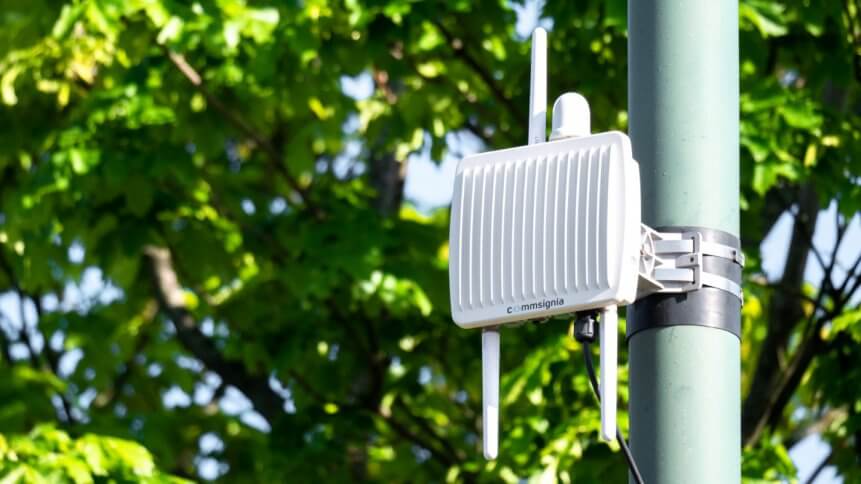Smart cities: applications multiplier elevates V2X gains

V2X might sound like a new energy drink or something to do with the Star Trek franchise, but both of those guesses would be wrong. V2X – as automotive experts will know – refers to the ‘vehicle-to-everything’ communications landscape, which has strong prospects for improving safety for all road users, bringing numerous gains in logistics, and streamlining travel. The infrastructure, which supports communications among cars, trucks, buses, scooters, traffic signals, pedestrians, and more, can also bolster the navigation of autonomous vehicles.
“The benefits of V2X come when you combine multiple use cases,” Andy Chappell, Senior Programme Manager at Commsignia, an international connectivity firm, told TechHQ. “And these play to both road operators and users.” Thanks to an increasing number of V2X trials that have been rolled out at various locations throughout the world, there’s no shortage of applications data where the benefits of vehicle-to-everything technology can be clearly seen.
Priority points
Junctions, or intersections, are prominent on the priority list as these road features are often associated with a high level of accidents. V2X can be used to warn drivers in the area of any incidents, including the deployment of airbags in vehicles ahead. Analyzing the broadcasts gives operators much better visibility of potential hot spots in the road network, and provides the opportunity to take action sooner. “There are lots of things that we can do with the data,” said Chappell. “Such as identify areas where there is persistent heavy braking.”
Should changes to the road surface or layout be required, repair crews could be kitted out with safety vests fitted with V2X transponders to raise their visibility to oncoming traffic – a use case that was demonstrated by Audi and Qualcomm in the US last year. And similarly, dynamic speed limits could be applied on roads near schools, playgrounds, and other areas busy with pedestrians. Some crossings are already equipped with cameras for counting the number of people waiting for lights to change at the side of the road – as part of adaptable traffic light priority systems. This pedestrian data could also contribute to V2X systems. “You can plug that in and benefit straight away,” said Chappell, noting that not everyone needs to be wearing a transponder to gain from V2X.
There are new vehicles on the road today that already have V2X technology built in – Volkwagen’s Golf 8 and ID4 are a couple of examples. And OEMs have V2X features baked into future design plans. But again, there are ways to leverage some of the benefits already. Most modern cars are equipped with a 4G modem, for example. “One of the advantageous of cellular is that it has the coverage and you can engage with users now rather than waiting for devices to be built into vehicles,” Chappell points out.
Call to action
Recently, Commsignia has been working with Vodafone to explore V2X use cases (PDF) over cellular in more detail. V2X comprises a range of deployment options, some based on Wi-Fi technology and some using cellular infrastructure. And while cellular doesn’t suit every application – for example, there are limits to its location accuracy – it is compelling given how widespread vehicle modems are and the fact that many road users will be carrying phones.
V2X also profits from being well-described by standards, which goes hand in hand with being able to scale up activity and giving stakeholders the confidence to invest in solutions and services. There are a number of message types contained within the protocol and looking at some of the common ones shines a light on some of the opportunities that V2X allows. Cooperative Awareness Messages (CAMs), sent between 3 and 10 times per second, give basic information about the sender such as heading and speed. And gathering this data allows calculations such as the collision risk between road users. Decentralized Environmental Notification Messages (DENMs) alert recipients to road hazards or abnormal traffic conditions – examples include warnings of black ice or emergency braking.
In terms of cooperative driving, Collective Perception Messages (CPMs) open the door to utilizing the increased sensing capabilities of current and future vehicles. In recent times, there have been huge improvements in situational awareness thanks to the incorporation of multiple cameras, ultrasonic sensors, automotive radar, and lidar (which although still not widespread on vehicles, has become significantly more affordable – a boost for roadside use too). CPMs enable the exchange of information about locally detected objects.
Bunch of benefits
Based on safety improvements alone, the pitch for greater adoption of V2X, is a strong one. And studies suggest that even relatively low rates of adoption can improve prospects for road users. Plus, as mentioned at the top of the piece, there are other benefits that can be delivered too – smoother traffic flow together with improvements in air quality, management of events traffic (concerts, city marathons, etc.), and prioritization of traffic classes such as buses and emergency vehicles, to name just a few examples.
Naturally, for all of this to work, nodes have to be able to trust each other. And V2X supports public key infrastructure (PKI) – in other words, a hierarchy of digital certificates linked to an audited root of trust. Systems can also leverage the security built into the cellular network, another win for being able to run services over existing infrastructure.









